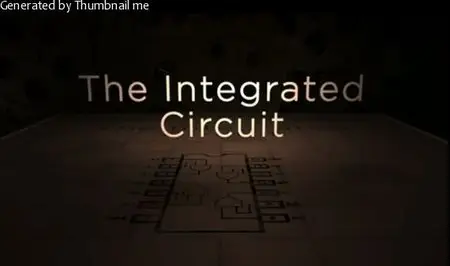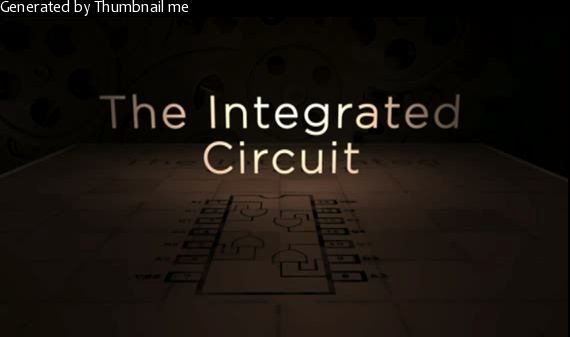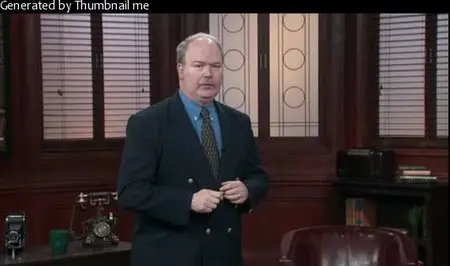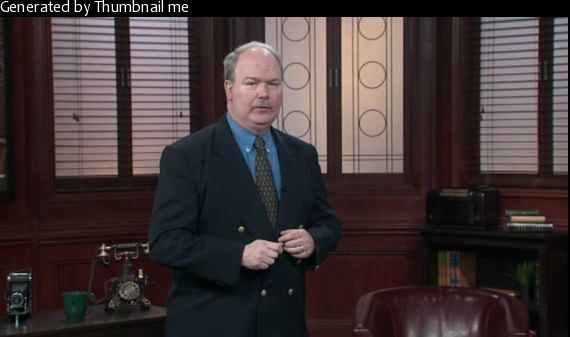Understanding the Inventions that Changed the World
DVD-Rip | AVC1 @ 1.3 Mbit/s | 570x320 | AAC Stereo @ 128 Kbit/s 48 KHz | 36x30 min | 8.66 GB
Genre: Innovation | Language: English
DVD-Rip | AVC1 @ 1.3 Mbit/s | 570x320 | AAC Stereo @ 128 Kbit/s 48 KHz | 36x30 min | 8.66 GB
Genre: Innovation | Language: English
We’re surrounded by inventions. Consider the clocks, appliances, and transportation that coordinate our days. Or the televisions, cell phones, and social media that connect us to each other. And the shopping malls, department stores, and catalogs that define the modern retailing experience.
Where did all these inventions come from? How do they work? And how do they reflect—even define—the values of our culture? From prehistoric times to the 21st century, inventions have changed the world, enabling humans to produce more food and energy and to establish social order and cultural meaning. In fact, great inventions have marked a number of key turning points in human history, transforming society and our daily lives. For instance:
The invention of clocks redefined our sense of time, life, and labor.
Telescopes and microscopes led to the scientific method of observation.
Access to clean water has perhaps saved more lives than any other technology in the history of the world.
Coal power gave rise to iron and steel, the basic materials of the Industrial Revolution.
The integrated circuit opened the floodgates for our world of modern electronics.
Now, you can learn the remarkable stories surrounding such monumental inventions—and how consequential these inventions were to history—in Understanding the Inventions That Changed the World. Taught by Professor W. Bernard Carlson of the University of Virginia, who is an expert on the role of innovation in history, these 36 enlightening lectures give you a broad survey of material history, from the ancient pottery wheel to the Internet and social media. Along with recounting the famous inventions you might expect, such as the steam engine, the airplane, and the atomic bomb, this course explores a number of surprising innovations, including beer, pagodas, and the operating room.
You’ll see how each invention is not only a product of engineering know-how, but a result of social and cultural conditions as well. You’ll meet some of the inventors and companies responsible for these innovations, and you’ll investigate what inspired these ideas. You’ll also get an inside look at the sometimes spirited competition between innovators to see who could develop—and market—the best, most cost-effective product.
From ancient China to 21st-century America, from the English coal mines to the high-tech companies of Silicon Valley, this course takes you around the world and across the ages to show you some of the most innovative moments in human civilization. This unique approach to history will boost your technology literacy and give you a completely new appreciation for the everyday objects around you.
Discover the Mechanics of Great Inventions
Material form has shaped the course of human history. In many ways, ours is a story of producing more—more calories, more work, more goods—with the same finite resources. Remarkably, while the materials and production techniques have changed over the centuries, from bronze to semiconductors and from the waterwheel to the assembly line, the process of invention remains largely the same. You’ll discover some key methods that have informed innovation for thousands of years:
Close observation: The great inventors pay attention to details. Close observation allowed ancient metallurgists to develop copper tools and bronze weapons. This same technique allowed 20th-century scientists to develop semiconductors, which are responsible for all of today’s electronics.
Invention by analogy: Inventors often borrow an existing idea and adapt it to another purpose. For instance, ancient potters created coiled pots modeled on the woven baskets already in existence. Similarly, Thomas Edison dreamed up motion pictures as a visual equivalent of the sound recordings played on a phonograph.
Thinking in terms of systems: Inventions don’t exist in a vacuum. Edison’s incandescent light bulb required a network of wires and generators. Likewise, cable television and cellular telephones require networks of computers, cables, satellites, and devices in order to work. Many inventors you study succeeded because they didn't design one machine but an entire system of coordinated devices.
Cultural contact: The story of inventions is the story of cultural contact, from the way merchants developed currencies and alphabets to facilitate trade between different societies, to the 21st-century political revolutions spurred on by social media and the introduction of new ideas into closed societies. You’ll compare and contrast how different cultures approach technical problems, and you’ll see how ideas spread around the globe.
Some of the great innovations you’ll explore are “vernacular inventions,” meaning they are the product of a group or community rather than a single individual. But with modern inventions in particular, we often know the individual responsible. In addition to studying how invention happens, you’ll enjoy learning about the personalities of notable figures such as
Leonardo da Vinci,
Prince Henry the Navigator,
Thomas Edison,
Nikola Tesla,
Alexander Graham Bell,
Henry Ford, and
Grace Hopper.
Explore the Turning Points in Human History
We often think of history in terms of great events—the invasions and battles and rulers of the world. But history is also a result of the interplay between individuals and technology. From bronze armor to the crossbow, and from gunpowder to nuclear weapons, the materials of war have shaped the nature of battle and, often, determined the victor. Professor Carlson gives you an intriguing look at some of the key points in our historical narrative from a wholly unique vantage point:
Early civilizations: Ancient humans are often classified as “primitive,” but in fact their inventions show they were capable of devising and controlling remarkably complex technical processes, such as the smelting of copper from ore and the brewing of beer from grains.
The shift into the modern era: From the waterwheel, our first major energy source beyond the muscle power of humans, to Prince Henry’s navigation techniques to get ships around the Horn of Africa, you’ll look at the inventions that moved humans out of the ancient world and into the modern.
The Industrial Revolution: Coal, steel, steam engines, and railroads—see how inventors and entrepreneurs used these technologies to increase speed, scale, and coordination, all of which led to dramatic improvements in productivity in the 19th century.
The “Mass” Century: The 20th century brought an unprecedented volume of goods, services—and threats—to the masses. Examine the inventions that allowed for mass production, mass consumption, mass media, and mass destruction.
The Information Age: It’s a brave new world, where messages are translated into binary code and transmitted instantly around the globe. Learn about personal computing, the Internet, search engines, and programming that make it possible.
In studying these turning points, you’ll also explore the icons of industry and discover the origins of some of our most recognizable brands, including
Ford Motor Company;
General Electric;
Sears, Roebuck & Co.;
Great Atlantic and Pacific Tea Company (A&P);
Hoover, Maytag, and Whirlpool;
NBC, CBS, and ABC;
Proctor & Gamble;
Texas Instruments;
Intel;
Apple; and
Google.
You’ll Never Look at the World the Same Way Again
These lectures feature an array of charts, diagrams, and demonstrations that will help you understand the science that underpins the world’s great inventions. Scientists, engineers, and laypeople alike will delight in finding out how all the wheels, gears, engines, and circuits operate, and you’ll come away with a solid understanding of what it took to create these inventions—both from an engineering stance and from a sociocultural perspective.
Professor Carlson clearly explains the key concepts, from the chemistry of distillation to the physics of electric currents to the principles behind computer programming. A witty storyteller, he packs the course with fascinating nuggets of information you can’t get anywhere else. You’ll find out where U.S. time zones came from, why Clarence Birdseye’s name fills your grocery store’s frozen foods aisle, and how 4G cellular signals actually work.
A dazzling introduction to the history of technology and innovation, Understanding the Inventions That Changed the World will change the way you see the world—and it will transform the way you think about business, economics, science, technology, and the course of human history.
Lectures
01 Great Inventions in Everyday Life
02 The Potter’s Wheel and Metallurgy
03 Beer, Wine, and Distilled Spirits
04 The Galley, Coins, and the Alphabet
05 Crossbows East and West
06 Roman Arches—Aqueducts and the Colosseum
07 Waterwheels and Clocks
08 Pagodas and Cathedrals
09 Paper and Printing
10 Gunpowder, Cannons, and Guns
11 Telescopes and Microscopes
12 The Caravel and Celestial Navigation
13 Unblocking the Power of Coal and Iron
14 Steam Engines and Pin Making
15 Canals and Railroads
16 Food Preservation
17 Water and Sewer Systems
18 Batteries and Electric Generators
19 Cameras, Telephones, and Phonographs
20 Electric Light and Power
21 Department Stores and Modern Retailing
22 Motion Pictures
23 Surgery and the Operating Room
24 Steel, Glass, and Plastics
25 The Model T
26 Aviation—The “Wright” Time for Flight
27 Radio and Television
28 Nuclear Power
29 Household Appliances
30 Electronics and the Chip
31 Satellites and Cell Phones
32 Personal Computing
33 Genetic Engineering
34 The Internet
35 Social Media and Democracy
36 Inventions and History









